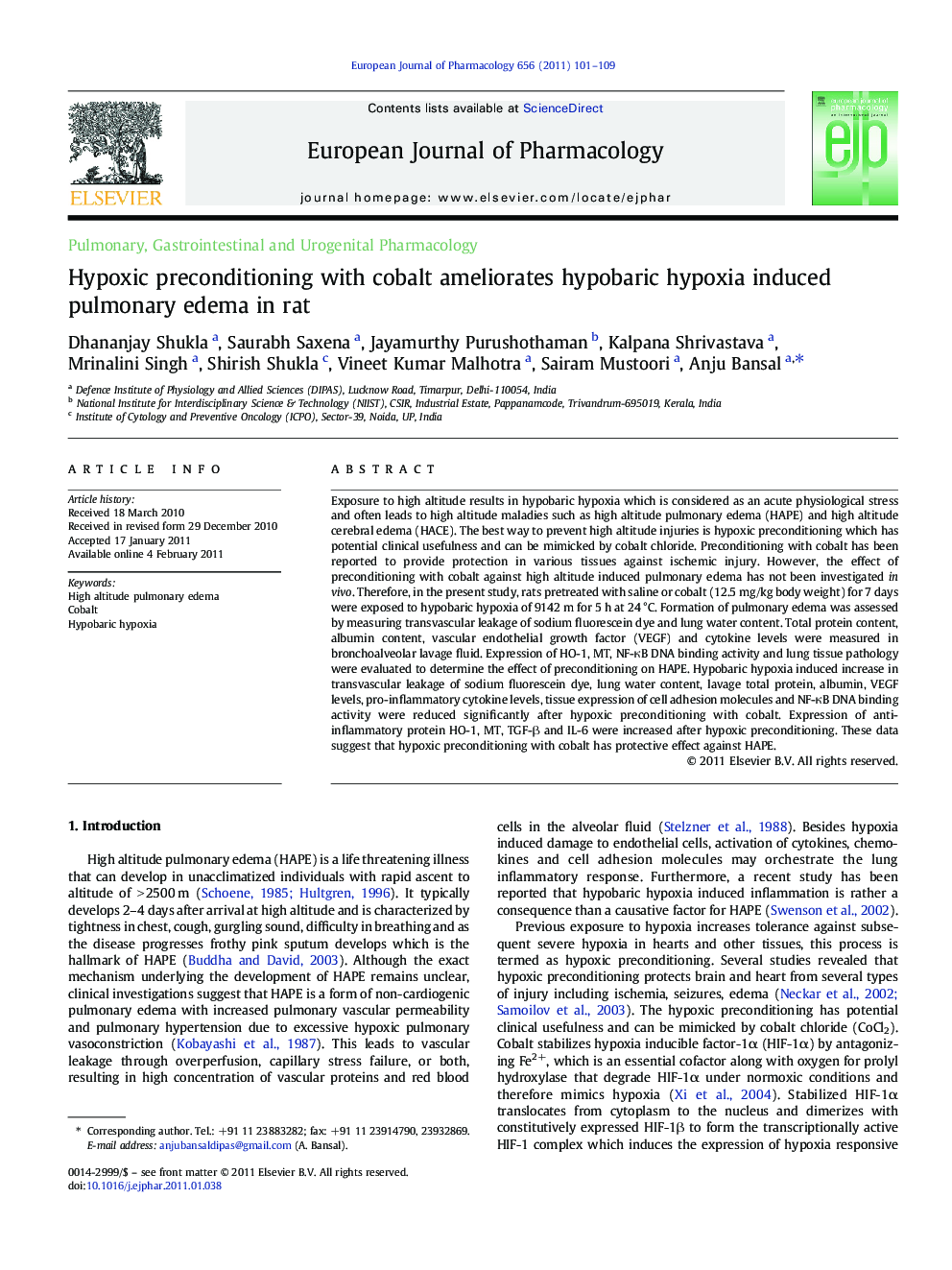| Article ID | Journal | Published Year | Pages | File Type |
|---|---|---|---|---|
| 5830392 | European Journal of Pharmacology | 2011 | 9 Pages |
Abstract
Exposure to high altitude results in hypobaric hypoxia which is considered as an acute physiological stress and often leads to high altitude maladies such as high altitude pulmonary edema (HAPE) and high altitude cerebral edema (HACE). The best way to prevent high altitude injuries is hypoxic preconditioning which has potential clinical usefulness and can be mimicked by cobalt chloride. Preconditioning with cobalt has been reported to provide protection in various tissues against ischemic injury. However, the effect of preconditioning with cobalt against high altitude induced pulmonary edema has not been investigated in vivo. Therefore, in the present study, rats pretreated with saline or cobalt (12.5 mg/kg body weight) for 7 days were exposed to hypobaric hypoxia of 9142 m for 5 h at 24 °C. Formation of pulmonary edema was assessed by measuring transvascular leakage of sodium fluorescein dye and lung water content. Total protein content, albumin content, vascular endothelial growth factor (VEGF) and cytokine levels were measured in bronchoalveolar lavage fluid. Expression of HO-1, MT, NF-κB DNA binding activity and lung tissue pathology were evaluated to determine the effect of preconditioning on HAPE. Hypobaric hypoxia induced increase in transvascular leakage of sodium fluorescein dye, lung water content, lavage total protein, albumin, VEGF levels, pro-inflammatory cytokine levels, tissue expression of cell adhesion molecules and NF-κB DNA binding activity were reduced significantly after hypoxic preconditioning with cobalt. Expression of anti-inflammatory protein HO-1, MT, TGF-β and IL-6 were increased after hypoxic preconditioning. These data suggest that hypoxic preconditioning with cobalt has protective effect against HAPE.
Related Topics
Life Sciences
Neuroscience
Cellular and Molecular Neuroscience
Authors
Dhananjay Shukla, Saurabh Saxena, Jayamurthy Purushothaman, Kalpana Shrivastava, Mrinalini Singh, Shirish Shukla, Vineet Kumar Malhotra, Sairam Mustoori, Anju Bansal,
